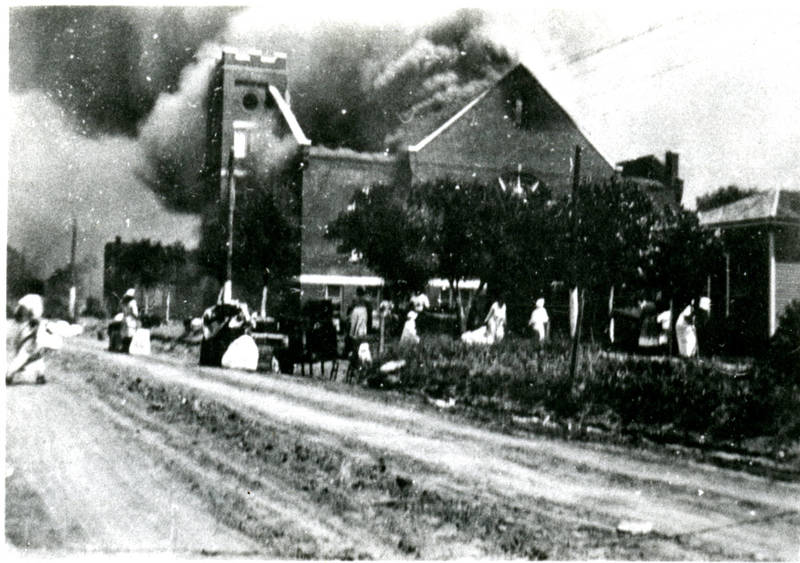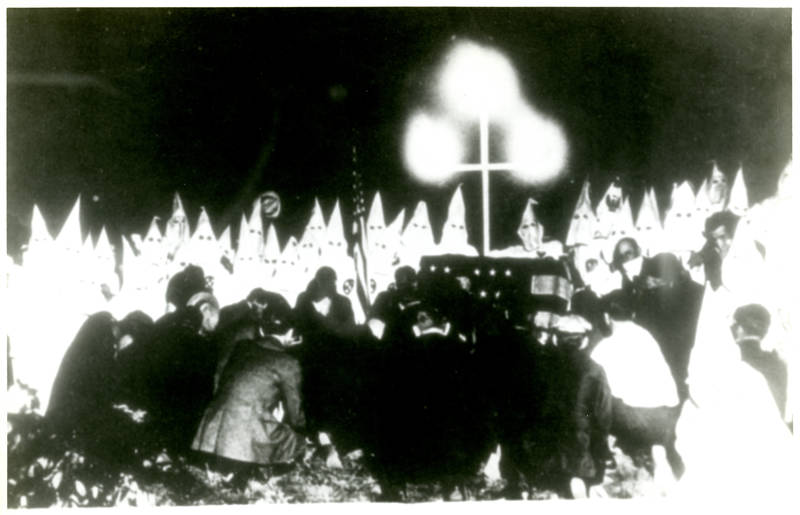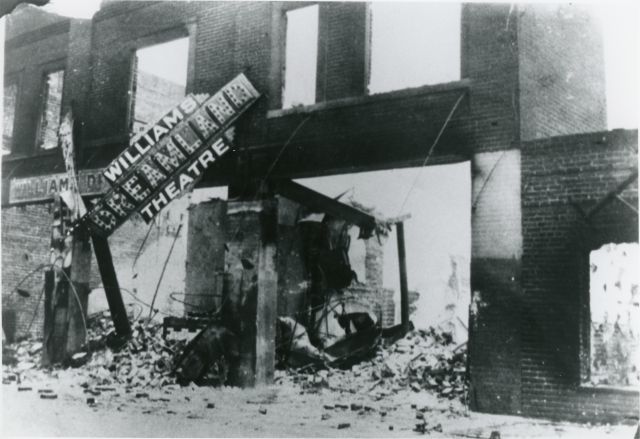Tulsa Burning
This watershed moment in Tulsa's history occurred in the national historical period commonly known as the Jim Crow Era, the nadir of American race relations when racism was more open and pronounced than any other period in American history. Expressions of white supremacy stripped Black Americans of their rights guaranteed by the US Constitution in the forms of political, social, and physical violence. As an illustration, legal segregation and racial discrimination laws fixed Black Americans politically and socially in a state of non-being. Domestic terrorist organizations such as the Ku Klux Klan, a white supremacist hate group, became widely popularized in American culture and film. Lynching mobs, as spectacles of racial terrorism and white supremacy, terrorized and treated Black Americans as subhuman.
On May 31, 1921, a white lynching mob formed outside the courthouse in Tulsa, Oklahoma, intending the extrajudicial killing of Dick Rowland, a young Black man and Greenwood community member accused of assaulting a young white female elevator operator, Sarah Page. The mindset of the mob was to uphold white supremacy. However, on the opposite side of the Frisco Railroad tracks, Greenwood community members demanded recognition of their humanity and an end to domestic terrorism in Tulsa. That evening in May, the two groups confronted one another, both armed outside the courthouse.
The opposing sides of this confrontation represented the power dynamics involved in the European colonial situation, as theorized by the twentieth-century philosopher and revolutionary Frantz Fanon. European colonialism, such as on the continent of Africa during this period, foundationally rested on white supremacy. In this period, American nationalism, American imperialism, and American western expansion all foundationally rested on white supremacy. To be non-white, especially to be Black and Native American, was to be removed from the realm of ethics. It was to be subhuman. Systemic racism in Oklahoma kept white people, the colonizer, at the top of the power dynamics in place. Native Americans and African Americans, the colonized, enjoyed less freedom, while the white people exploited the land for its natural resources, oil, and capital.
A collective understanding formed amongst white Tulsans, visibly marked by segregation laws that the law is catered to your skin color and created a collective subjectivity based on an epidermal bodily schema. Meaning one can move within the world freely to make objects in the world one's own. The colonized, specifically Black people in Oklahoma, understood the opposite side of that epidermal bodily schema. Meaning one feels restricted in subjectivity, attempting to make objects in the world one's own. The white gaze of systemic racism fixes one's bodily schema as subjectivity collapses into objectivity. One finds oneself as an object in the world. Thus, politically and socially fixed in a state of non-being by the white gaze, the Greenwood community members chose violence as the only means of re-entering the realm of ethics, the only means to prove their humanity, as they demanded recognition as subjects in the world.
The armed confrontation evolved into armed conflict after one member of the lynching mob attempted to disarm a member of the Greenwood community, challenging his humanity. Gunfire from both sides arrayed simultaneously, and there was a firefight. The two groups battled outside the courthouse until ammunition depleted. These Black Tulsans collectively understood themselves to be proving their humanity through violence against the oppressor, white supremacy. These individuals understood that their actions had potential consequences and were willing to face what may come. The other group collectively understood themselves to be sanctioned by the law, even more as an extension of the state itself, being that the city of Tulsa deputized many whites. These individuals understood that any action they deemed necessary would go without consequence. Thus, after the gunsmoke cleared, with casualties on both sides, the members of Greenwood returned home, proven their humanity, and promised the safety of Dick Rowland. However, the white lynch mob did not let things go at a few casualties on each side. They intended on inflicting collective punishment on the Greenwood community by bringing total war north of the Frisco Railroad tracks.


